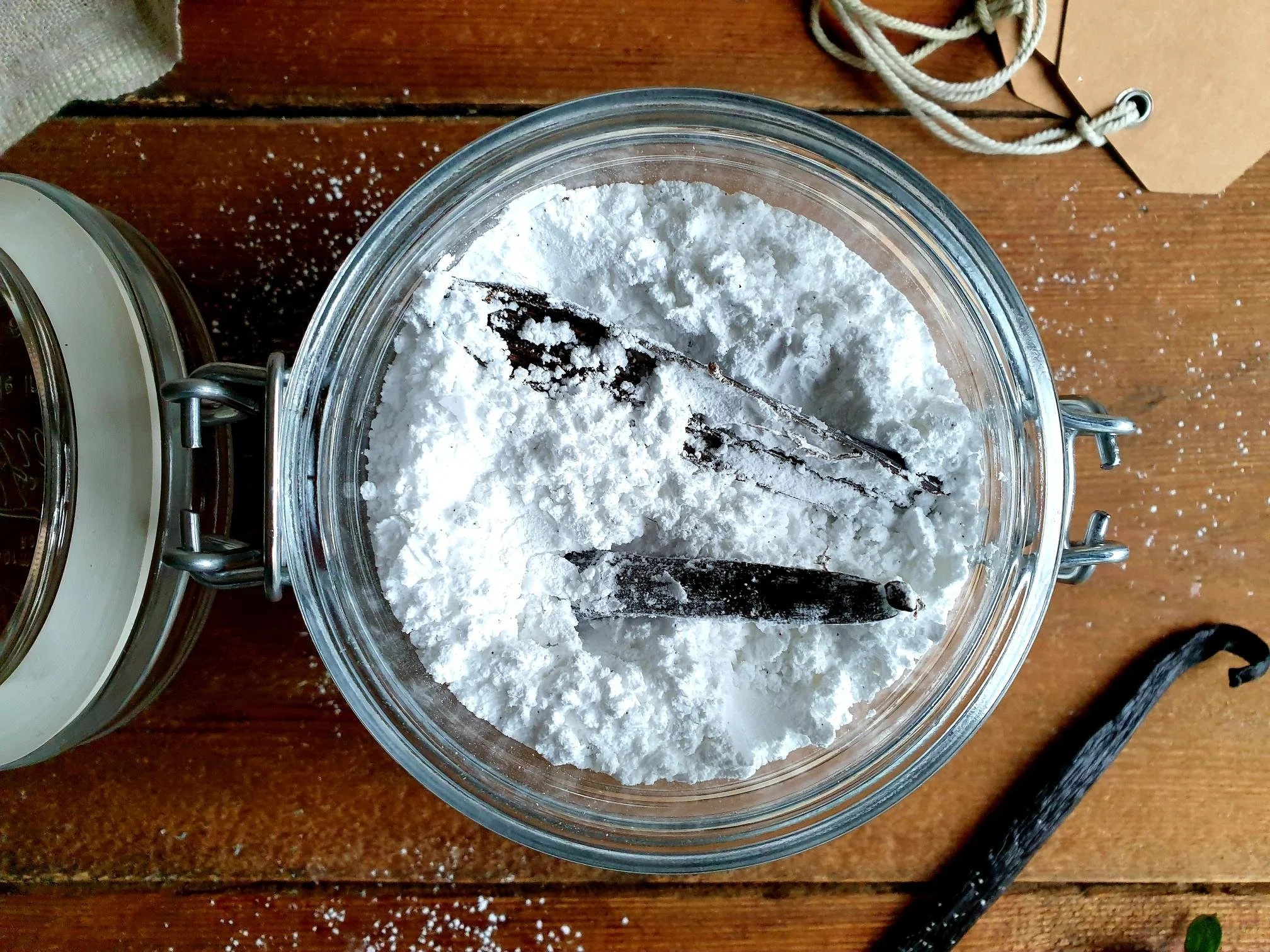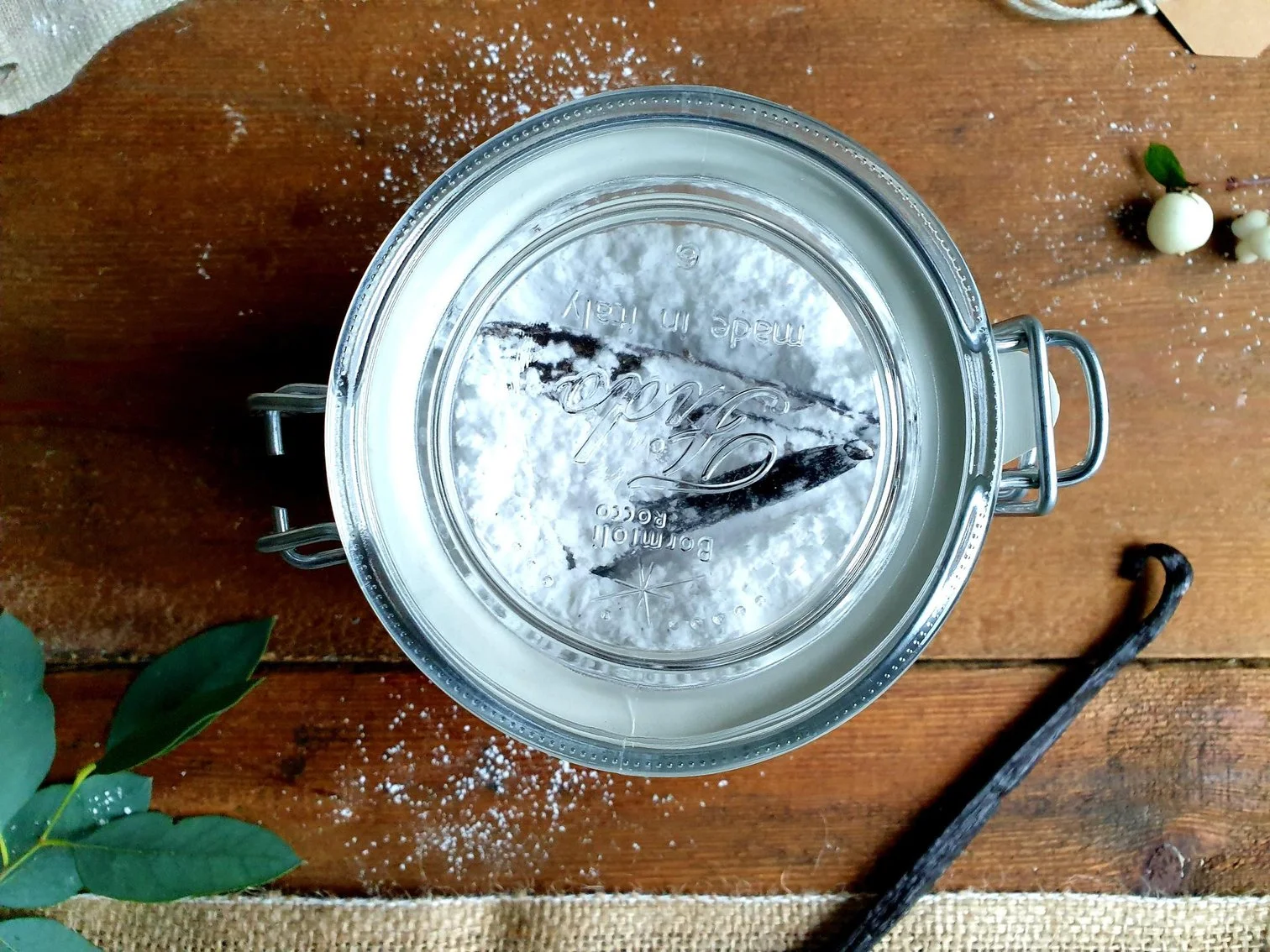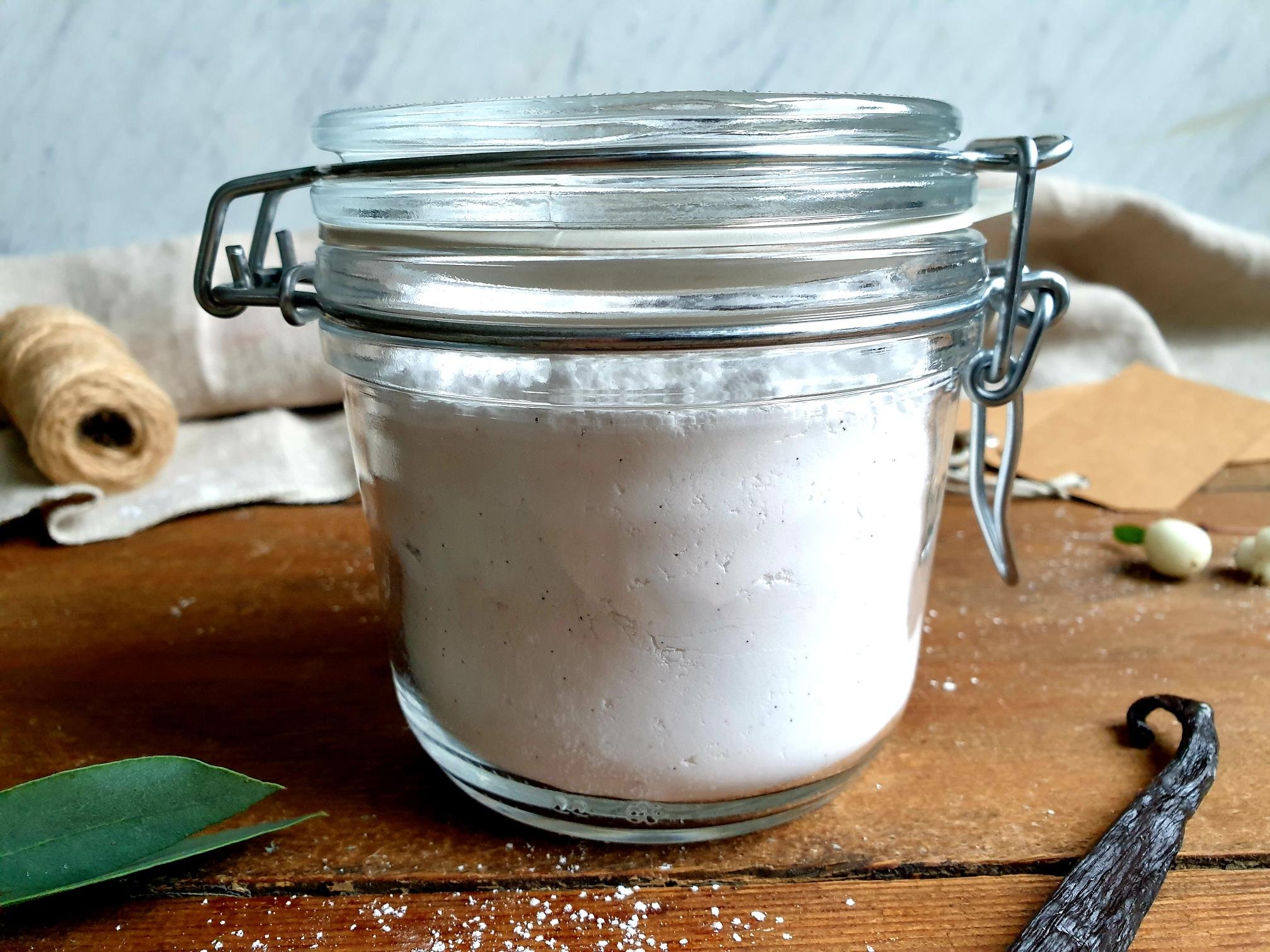Homemade Vanilla Icing Sugar Recipe
Vanilla icing sugar is widely used in a lot of European baking recipes. It is a very common and a staple baking ingredient. It is added to batters and dough, to whipped cream, sprinkled on top of fresh strawberries, used to dust the cakes, biscuits and other sweets treats. Could not be simpler to make at home, regular icing sugar gets infused with vanilla seeds from a vanilla bean.
On the continent, it is easily available in just about every supermarket, and is so popular that supermarkets sell their own brand of vanilla sugar. This commercially produced vanilla sugar uses vanillin, (primary substance of natural vanilla extract or bean, which is cheaper) rather than vanilla beans (vanilla bean seeds). However, here in the UK, where I currently live, this type of sugar is a bit of a struggle to find, you can almost exclusively buy it in continental food stores or speciality stores.
Vanilla extract, paste, and vanilla beans, in most cases, easily replace vanilla sugar when making custard or when baking cakes or biscuits, but there is one recipe that vanilla icing sugar simply cannot be replaced, and that is for the Austrian Vanilla Crescent Biscuits.
When making these biscuits you can easily add vanilla extract or vanilla paste or seeds from vanilla pod to the biscuit dough, but once the biscuits are baked, they need to be coated in vanilla icing sugar that simply cannot be replaced or substituted by anything else.
Preparing your own vanilla icing sugar offers a very practical solution if you cannot get hold of vanilla sugar, but also makes a lovely homemade gift for your foodie friends and family. It is very quick and easy to make, and you know exactly what goes in it.
Ingredients
400g icing sugar
2 vanilla pods
Method
Put icing sugar in a food processor (small food chopper or blender, coffee bean or spice grinder will work too). If you do not have any of the above, a bowl and a whisk will do just fine. Food processor helps to break up vanilla seeds that can stick together and clump up a bit.
Cut the vanilla pod in half lengthwise but try not to cut all the way through. Scrape the seeds out of the pod with a knife, keep and reserve the empty pods for later use.
Add the seeds to the sugar .
Pulse and mix, (or whisk if using a bowl and a whisk).
Put the sugar into an airtight container or divide between the glass jars with airtight lids (size and shape of your choice).
Cut the rest of the vanilla pod in pieces and add them to the sugar, this will add more flavour.
You can use the sugar immediately or leave overnight. For optimal flavour leave about two weeks for the sugar to fully absorb the vanilla flour.
Store the vanilla sugar at room temperature in a dry and cool place and give a jar a little shake now and again as the sugar can possibly clump together a bit.
Use for anything you want to add vanilla flavour and particularly indicated for coating Vanilla Crescents Biscuits.
























